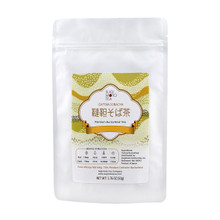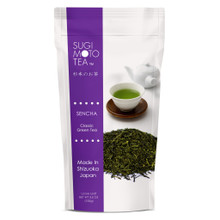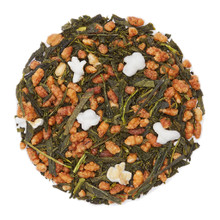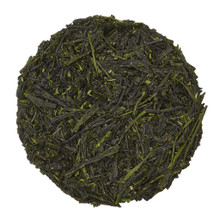Sustainability in Every Sip: The Chagusaba Tea Cultivation Method
Nestled in the scenic hills of Shizuoka, Japan is a living testament to mankind's ability to coexist harmoniously with nature. Here, the Chagusaba method has been the bridge between sustainable agriculture and the timeless beauty of semi-natural grasslands, all with a singular purpose – to brew the perfect cup of tea.
Chagusaba is the traditional agricultural practice of using cut grass to nurture tea plants. In the autumn season, grass is cut, dried and subsequently spread across the tea fields. This grass provides the soil with extra nutrients and helps the soil retain essential moisture. Today we will explore the chagusaba method and its various benefits to both tea and the environment.
Historical Roots: Chagusaba in Shizuoka
For generations, the people of Shizuoka have practiced a cultivation technique that preserves unique ecosystems in their environment. Embracing the wild grasses like susuki and sasa, they spread them between tea rows, a practice which has since led to the area's recognition as a World Agricultural Heritage site. The integration of these wild grasses not only beautifies the land but also preserves its biodiversity, offering shelter to over 300 species. Today, over 130 hectares of semi-natural grasslands exist alongside Shizuoka’s tea fields.
Unraveling the Chagusaba Process
The chagusaba method is more than meets the eye. While in the summertime there appears to be nothing more than random fields of wild grass surrounding the tea fields of Shizuoka, every autumn an agricultural ritual unfolds. The wild grasses are harvested and dried in a conical shaped mound called “kapposhi”. Once they are dried and placed between the tea rows, this organic mulch turns into a nutrient-rich compost, enhancing the very essence of the tea – its aroma and taste.
Reaping Environmental and Ecological Rewards
Biodiversity Boon:
Beyond a cup of tea, Chagusaba nurtures life. While the dried grass helps to grow the finest tea leaves, the nearby tended grass fields themselves are home to several near-threatened and endangered plants and animals, ensuring their survival in a rapidly changing world. These plants and animals are also thought of as “harbingers of the seasons,” offering farmers a telltale sign of when the seasons change.
Chagusaba is home to over 300 species of grassland plants and animals, including a grasshopper species unique to these semi-natural grasslands, called the Kakegawa Melanoplinae. Among the plants is the Haru Rindo, a delicate flower that is only about 10 centimeters in length. As the grass used in the chagusaba method is cut and carried to the tea fields every year, these tiny flowers have access to direct sunlight, a crucial factor for their growth that would otherwise be limited.
Championing Soil Health and Land Management:
The wild grasses used in the Chagusaba method not only inhibit weed growth but improve soil quality and its water retention capabilities. A perfect environment for tea cultivation, the method showcases the beauty of sustainable land management.
A Sustainable Solution to Modern Challenges:
Grasslands play an unsung role in climate change mitigation. They capture carbon dioxide from the atmosphere and store it in the soil, helping to reduce the overall carbon dioxide in the atmosphere. Thus, Chagusaba is more than a cultivation technique; it's a step towards a greener future.
Beyond Agriculture: Socio-economic and Cultural Threads
Securing Livelihoods and Economic Prosperity:
For Shizuoka's inhabitants, tea is life. The Chagusaba method, with its emphasis on quality and sustainability, was recognized as a Globally Important Agricultural Heritage System (GIAHS) by the United Nation in 2013. This international recognition gives farmers an advantage in the global market, ensuring their prosperity.
Preserving Knowledge and Innovations:
This labor-intensive technique yields unparalleled rewards. The teas produced here, enriched by the chagusaba process, possess a richer hue, inviting aroma, and a taste that stands testament to the method's superiority.
Chagusaba in the Global Sustainability Framework
Amidst the hustle of modern life, Chagusaba is a reminder of the beauty of tradition and sustainability. Its alignment with global ecological goals makes it a model for future agricultural practices worldwide.
Experiencing Chagusaba: A Symphony of Nature and Culture
A journey through Shizuoka is a step back in time. Each tea field tells tales of traditions preserved and innovations embraced. It’s a sojourn of discovery, where every leaf and blade of grass sings a song of harmony.
The Chagusaba method, with its fusion of sustainability and culture, beckons us to reimagine our relationship with nature. Each tea sip, infused with tradition and nurtured by nature, is a taste of a more sustainable tomorrow.
Further Exploration
Those keen to delve deeper can explore:
- GIAHS article on Shizuoka’s Traditional Tea-Grass Integrated System
- FAO article on the Traditional Tea-grass Integrated System in Shizuoka

















































